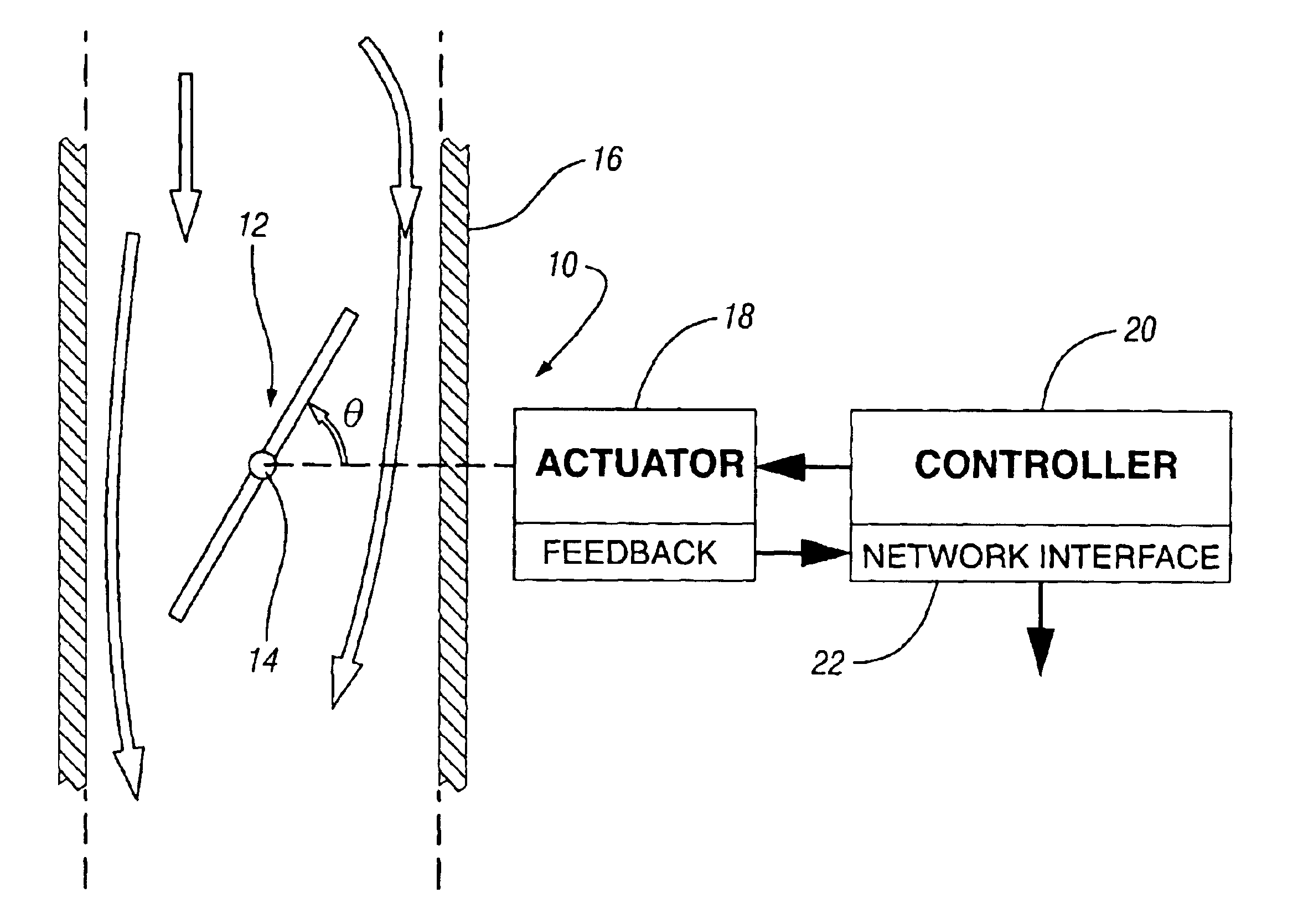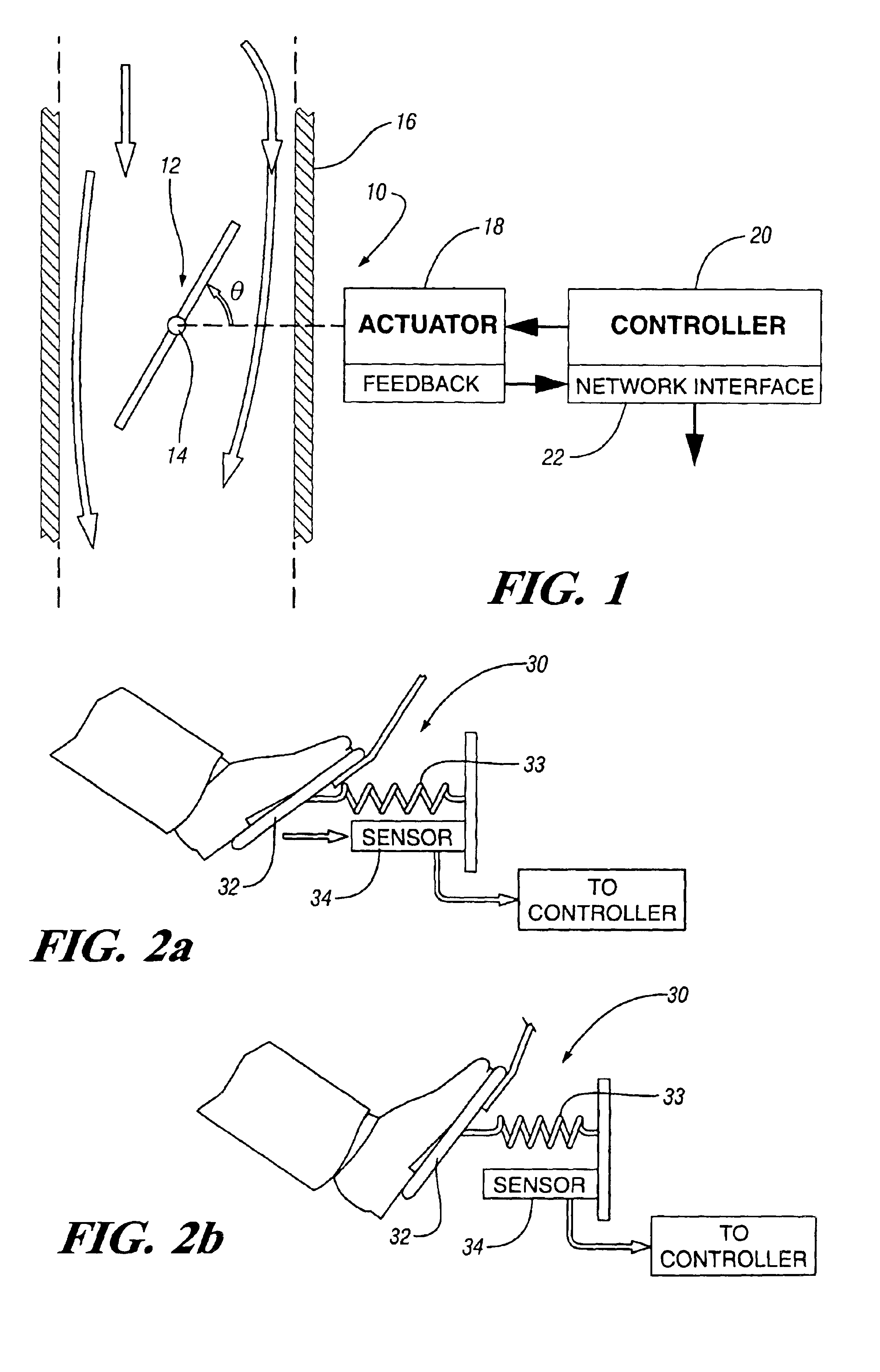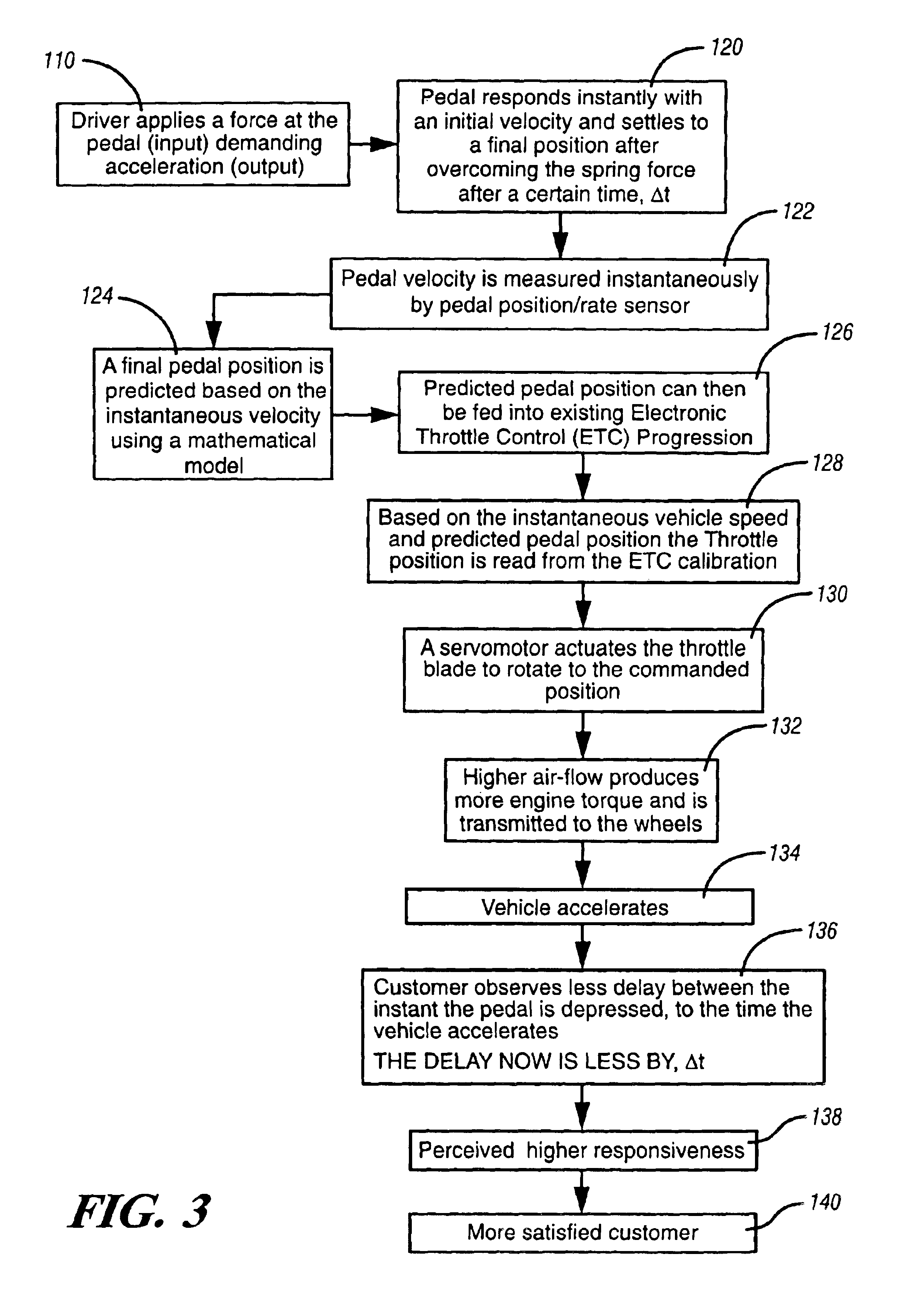Pedal position rate-based electronic throttle progression
a technology of electronic throttle and pedal position, applied in the direction of electric control, fuel injection control, machines/engines, etc., can solve the problems of undesirable delay in vehicle response, reduce the amount of time, reduce the delay in response, and improve the responsiveness of the vehicle
- Summary
- Abstract
- Description
- Claims
- Application Information
AI Technical Summary
Benefits of technology
Problems solved by technology
Method used
Image
Examples
Embodiment Construction
[0015]FIG. 1 is a diagrammatic drawing of an electronic throttle system 10 of the present invention. The system includes a throttle plate 12 which may be rotated to an angular position θ about pivot axis 14 within a throttle body 16 to control air flow to an internal combustion engine (ICE). If the angle θ is equal to zero, the throttle plate 12 will be in a position of maximum air flow constriction, and if the angle θ is equal to ninety degrees, the throttle plate 12 will be in a position of maximum air flow. Accordingly, the air flow may have varying flow rates when the angle θ is varied between zero and ninety degrees. The throttle plate is moved by an actuator 18 such as an electric motor. The electronic throttle system 10 may utilize any known electric motor or actuation technology in the art including, but not limited to, DC motors, AC motors, permanent magnet brushless motors, and reluctance motors.
[0016]An electronic throttle controller 20 includes power circuitry to modulat...
PUM
 Login to View More
Login to View More Abstract
Description
Claims
Application Information
 Login to View More
Login to View More - R&D
- Intellectual Property
- Life Sciences
- Materials
- Tech Scout
- Unparalleled Data Quality
- Higher Quality Content
- 60% Fewer Hallucinations
Browse by: Latest US Patents, China's latest patents, Technical Efficacy Thesaurus, Application Domain, Technology Topic, Popular Technical Reports.
© 2025 PatSnap. All rights reserved.Legal|Privacy policy|Modern Slavery Act Transparency Statement|Sitemap|About US| Contact US: help@patsnap.com



